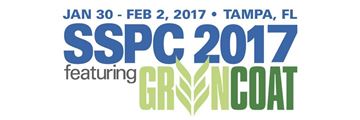Search
Estimating Color Fade of PVDF-Based Topcoats for ‘Bright Color’ Architectural Restoration and Protective Coating Applications
Also Purchased
Evaluations of Wetting and Dispersing Additives for Use in Waterborne AntiCorrosive Paints
Product Number:
51217-032-SG
Publication Date:
2017
$20.00
09009 Heavy Duty Glass flake Coatings for Arduous Anti-Corrosion Service
Product Number:
51300-09009-SG
ISBN:
09009 2009 CP
Publication Date:
2009
$20.00
09012 Advancements in High Performance Zinc Epoxy Coatings
Product Number:
51300-09012-SG
ISBN:
09012 2009 CP
Publication Date:
2009
$20.00




